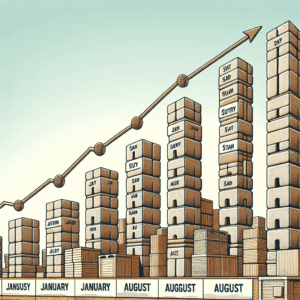Sure! Here’s the translation:
—
The increase in torrential rains and other extreme weather phenomena in Spain has generated growing concern among citizens about the possibility of flooding in their homes. According to the latest CIS barometer on civil protection, published in March 2025, 53.2% of Spaniards are “fairly” or “very” worried about the likelihood of being affected by a natural disaster. Additionally, 60.5% believe that such events could occur in their own households. These figures reflect a notable increase in concern, as in 2011, only 51.2% of Spaniards expressed little worry about these issues, and just 16.5% thought it likely that they would be victims of a natural disaster.
The Ministry for Ecological Transition and the Demographic Challenge has confirmed that floods are the most common and costly natural disasters in Spain, accounting for 65% of the damages compensated for extraordinary risks. Climate change is putting this issue in an even more severe context, increasing the frequency and devastation of floods, which leads to forecasts of heightened risk in the coming decades.
To address this situation, safety experts have recommended that the public follow certain key steps before, during, and after a flood. Before a flood occurs, it is advisable to inspect and clean roofs, gutters, and drains to ensure proper drainage. Additionally, it is essential to seal potential leaks in windows, doors, and exterior walls with waterproof materials, as well as remove outdoor objects that could be swept away by water. Staying informed about weather predictions and following recommendations from authorities is also crucial. Installing electronic early warning systems can alert residents to the presence of water in critical areas of the home.
During a flood, if it is safe to do so, disconnecting electricity and gas is crucial to avoid hazards. It is recommended to evacuate basements and ground floors, moving people and valuables to higher ground. Avoid contact with rivers and streams, and do not attempt to cross flooded areas. Following instructions from authorities and prioritizing personal safety is fundamental.
Once the flood has passed, it is vital not to return home until authorities confirm it is safe. Food and beverages that have been in contact with contaminated water should be discarded, and damages should be documented with photographs in order to manage claims with the insurance company. Cleaning and disinfecting affected areas using appropriate protective gear is also important, as well as consulting professionals to assess potential structural damages.
Experts like José González Osma, general director of ADT, explain that prevention and knowledge about how to act can be key during these unpredictable events. Furthermore, early warning systems can help respond in time, avoiding greater damage. On the other hand, it is important for citizens to know what their home insurance covers in the event of flooding. Generally, these policies include water damage caused by leaks or burst pipes, but in situations of extreme weather phenomena, responsibility falls on the Insurance Compensation Consortium, provided there is a home insurance policy that includes coverage for property damage.
—
If you need anything else, feel free to ask!
Source: MiMub in Spanish











